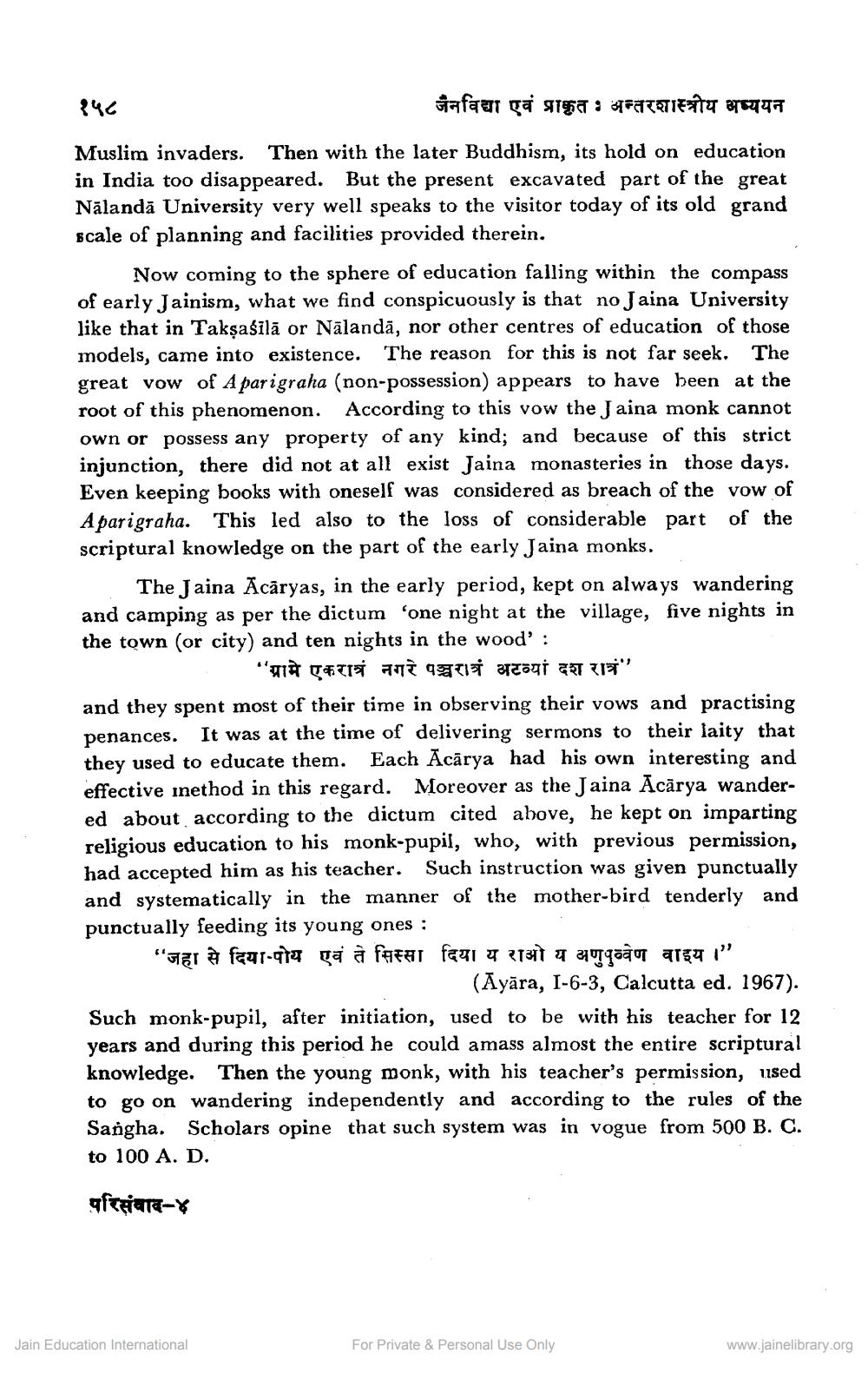Book Title: Jaina Path Of Education Author(s): B K Khadabadi Publisher: Z_Jain_Vidya_evam_Prakrit_014026_HR.pdf View full book textPage 2
________________ १५८ जनविद्या एवं प्राकृत : अन्तरशास्त्रीय अध्ययन Muslim invaders. Then with the later Buddhism, its hold on education in India too disappeared. But the present excavated part of the great Nalanda University very well speaks to the visitor today of its old grand scale of planning and facilities provided therein. Now coming to the sphere of education falling within the compass of early Jainism, what we find conspicuously is that no Jaina University like that in Taksasilā or Nalandā, nor other centres of education of those models, came into existence. The reason for this is not far seek. The great vow of A parigraha (non-possession) appears to have been at the root of this phenomenon. According to this vow the J aina monk cannot own or possess any property of any kind; and because of this strict injunction, there did not at all exist Jaina monasteries in those days. Even keeping books with oneself was considered as breach of the vow of A parigraha. This led also to the loss of considerable part of the scriptural knowledge on the part of the early Jaina monks. The Jaina Ācāryas, in the early period, kept on always wandering and camping as per the dictum 'one night at the village, five nights in the town (or city) and ten nights in the wood': "A TATIS ATT ETT agi at 11" and they spent most of their time in observing their vows and practising penances. It was at the time of delivering sermons to their laity that they used to educate them. Each Ācārya had his own interesting and effective inethod in this regard. Moreover as the Jaina Acārya wandered about according to the dictum cited above, he kept on imparting religious education to his monk-pupil, who, with previous permission, had accepted him as his teacher. Such instruction was given punctually and systematically in the manner of the mother-bird tenderly and punctually feeding its young ones : "जहा से दिया-पोय एवं ते सिस्सा दिया य राओ य अणुपुत्वेण वाइय ।" (Āyāra, 1-6-3, Calcutta ed. 1967). Such monk-pupil, after initiation, used to be with his teacher for 12 years and during this period he could amass almost the entire scriptural knowledge. Then the young monk, with his teacher's permission, used to go on wandering independently and according to the rules of the Sangha Scholars opine that such system was in vogue from 500 B. C. to 100 A. D. परिसंवाद-४ Jain Education International For Private & Personal Use Only www.jainelibrary.orgPage Navigation
1 2 3 4 5 6 7 8
